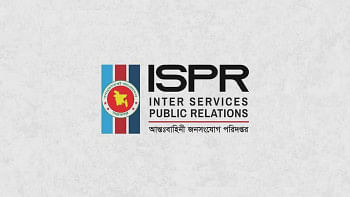Of Manipuri dance

The first impression that one gets after viewing a Manipuri performance is the personification of power contained. Underlying the inherent fluidity and excruciating grace of the performance is the impression of control and restrain excercised by the performer. This characteristic of ease and fluidity contrasts distinctively from the precision and terse clarity of the South Indian style but in no way negates a high degree of technicality.
Manipuri is a living force in this land of verdant hills and flowing landscapes. Every occasion worth celebrating merits a Manipuri performance be it a birth, a marriage, or any such festivity. In Manipur it is rare to see anyone without the knowledge of dance and music. Royalty, too, have been known to mingle with the commoners on the 'mandapa' or stage as a mark of their proficiency in the aesthetic arts.
Origins
From history we learn that the 'Meities', early inhabitants of Manipur, performed certain ritualistic dances characterized by repetitive but disciplined movements to invoke the deity. The 'maibas', 'lai haroba' and the 'khamba thoibi' were a part of their repertoire. However, during the 17th century the advent of Hinduism, specifically Vaishnavism, brought about an evolution of a distinct dance form which shows mutual interaction between the earlier ritualistic dances and the Vaishnava 'bhakti' cult. The present form of the Manipuri dance is said to have evolved during the reign of Maharaja Bhagyachandra during 1964-1789.
Influence of Bengal
Remarkable is the fact the Maharaja Bhagyachandra adopted 'Gaudiya Vaishnavism' under the influence of Paramananda Thakur, a great devotee of Krishna. As a result some Vaishnavite missionaries from Bengal were brought to Manipur. In consequence, Bengali script and literature spread here and replaced the Meithie language. Furthermore musical instruments from Bengal were also adapted and incorporated and helped to make the music of Manipur richer. One example is that of the 'mridanga', from Bengal, which evolved into the popularly used 'poong' of Manipur.
The Repertoire
The 'cholams', one of the three aspects of tandava dance, comprise a major portion of a Manipuri repertoire. Sri Chaitanya, a leading exponent of the Bhakti cult, popularised the 'kirtanas' or devotional songs performed en masse, as a mark or spiritual devotion. 'Cholams' are an extension of this ritual of 'Sankirtan' where the devotee in an excess of emotion embarks on dance. The 'cholams' are performed in groups and instruments like the 'karatali' and 'poong', used as accompaniments during 'kirtana', are incorporated within the dance. The ritual dances of the Shaivite period have, also, survived and are very much a part of the repertoire. Strictly speaking these dances are on the margin of classical and folk dances. They are invariably performed in groups and are known to the community at large.
Raas-Lila
It is only when we come to the 'Raas' that we encounter the richness and classicism of both 'nritya' and 'abhinaya' in the Manipuri style. As per the 'Natyashastra', the 'Raas' is a drama performed on a circular stage. Maharaja Bhagyachandra is, also, recognized to be the founder of the 'Raas Lila', wherein dances are performed night-long under the full-moon depicting various episodes from the legends of Lord Krishna, Sri Radha and the Gopis. The 'raasa-mandali' or stage of the 'Raas Lila' is circular and decorated with floral paper cut-outs, flowers and greenery. A 'ghata' or vessel, depicting offerings to the dieties, is placed in the centre around which the dances are performed. The audience sit all around the 'mandapa' very much like in Jatra performances.
There are three main varieties of 'Raas Lila' prevalent today in Manipur. 'Basanta Raas' performed on the full moon day of Chaitra represents the amorous scenes of th eromance of Krishna and Radha. 'Kunja Raas' performed during Dasara depicts the dance in an arbour made of leaves where the daily meetings of the divine lovers Radha and Krishna are enacted. 'Maha Raas' performed on the full moon day of Kartik is the very romantic story Krishna as a lover-be it with the Gopis or with Radha.
The Structure of the dance
The three fold aspect of the dance 'nritta', 'nritiya' and 'natya', as set down by the 'Natyashastra', are all present in this rich style of dance. However, most certainly there is a predominance of 'nritya'. The 'cholams' are of the pure 'nritta' variety, while the 'Lai Haroba' and 'Khamba Thoibi' have elements of 'abhinaya' besides pure 'nritta'. The very essence of Manipuri is an understatement of emotions and facial expressions. However, inspite of traces of various 'vyabhicharibhavas', transient emotions, throughout the performance, the predominant mood or 'sthayibhava' is 'karuna' which shrouds an aura of 'shringara rasa'.
As per Bharata Muni, the compiler of the 'Natyashastra', dance may be either 'lasya' characterized by gliding and soft movements or 'tandava' being more vigorous and forceful. The Manipuri Dance form is distinct from other classical dance forms by the believe that all dances performed by the female dancer should necessarily be in the 'lasya' style and that of the male dancers in the 'tandava' style.
The dress
It is believed that the costume for the Manipuri Dance was visualised by Maharaja Bhagyachandra, inspired by visions of Lord Krishna, himself, seen in his dreams.
The Rabindra Nritya Dhaka & Manipur
Deeply moved by the Raas Lila during his visit to Manipur in 1917, Rabindranath Tagore is credited with introducing this enchnting style of dance to the other parts of the world. Renowned teachers were invited to teach this dance form in tagore's idylic institute in Shantiniketan. Furthermore, Tagore borrowed elements liberally from this dance to mould his own dance-dramas like Chitrangada, Chandalika and Shapmochan. The softness and grace that form a characteristic feature of Tagore's own style and rightly attributed to the Manipuri elements incorporated in the dramas.

 For all latest news, follow The Daily Star's Google News channel.
For all latest news, follow The Daily Star's Google News channel. 



Comments